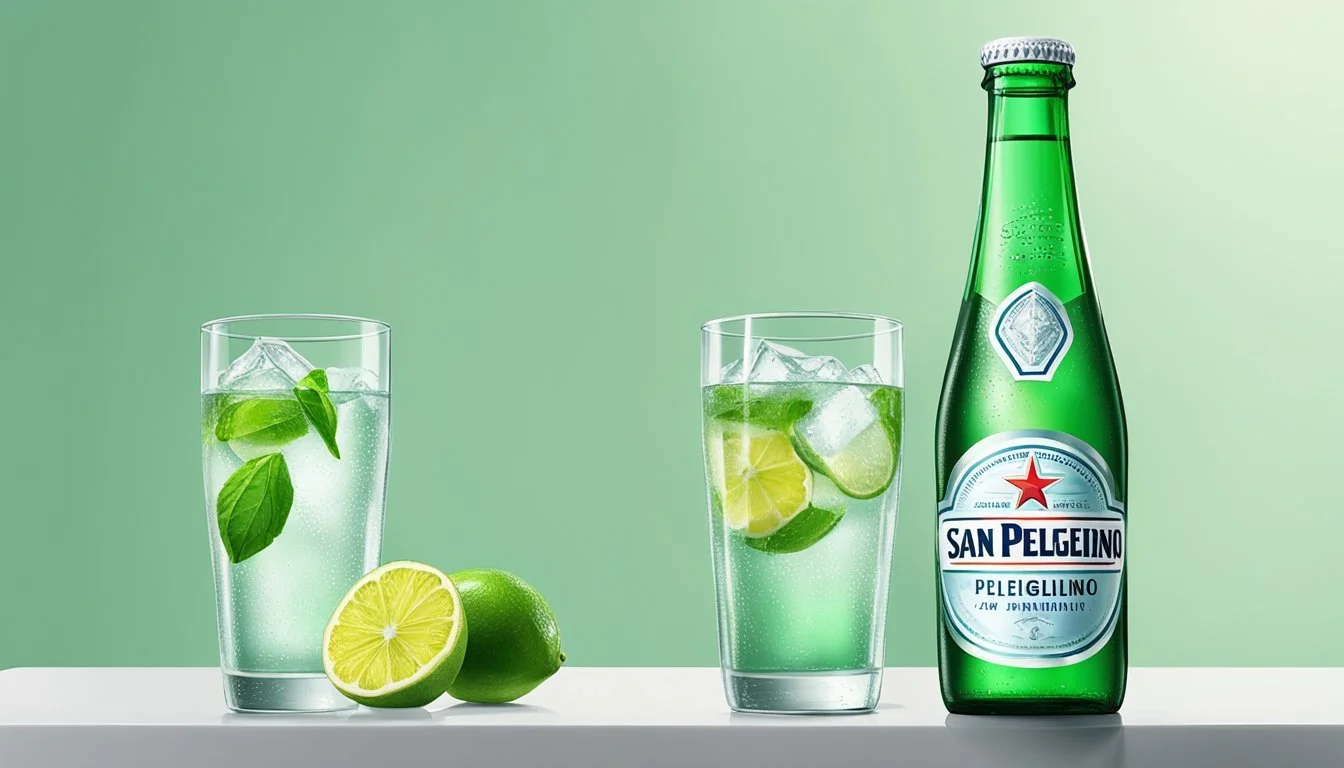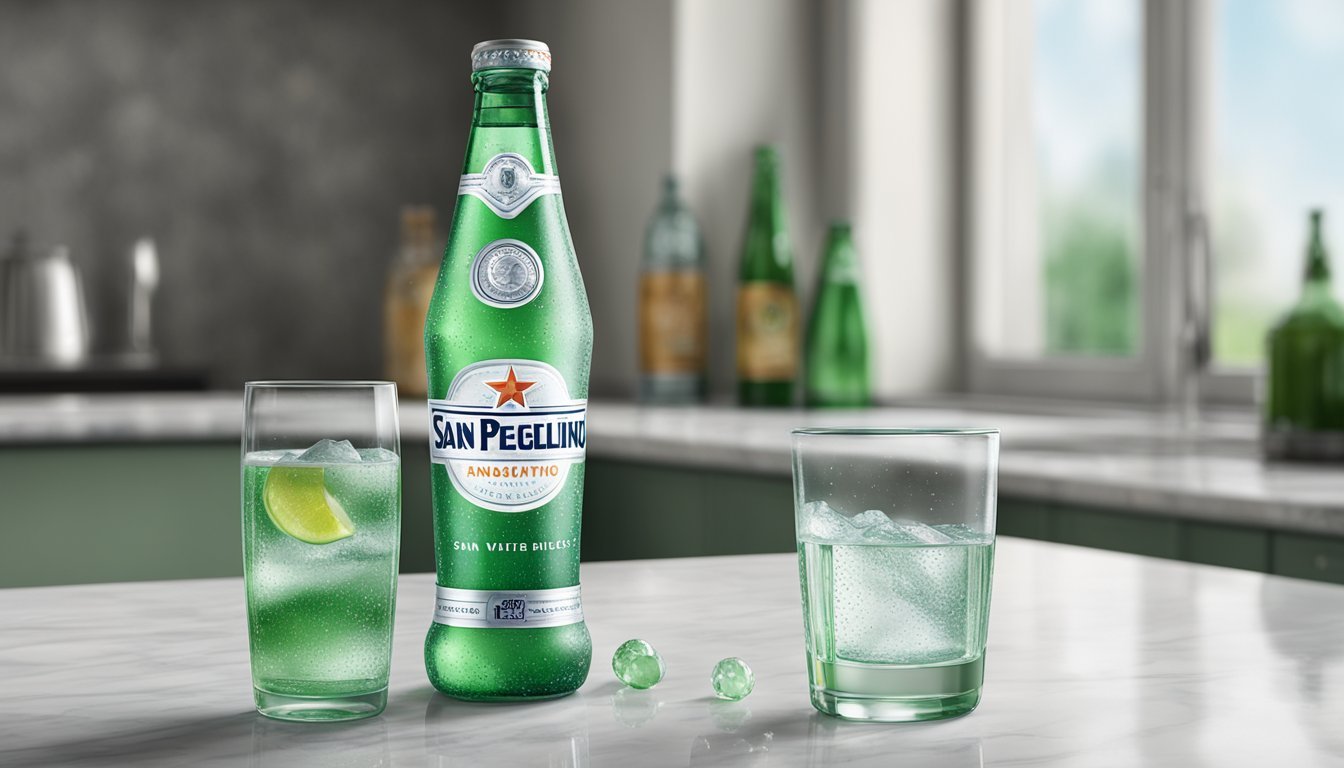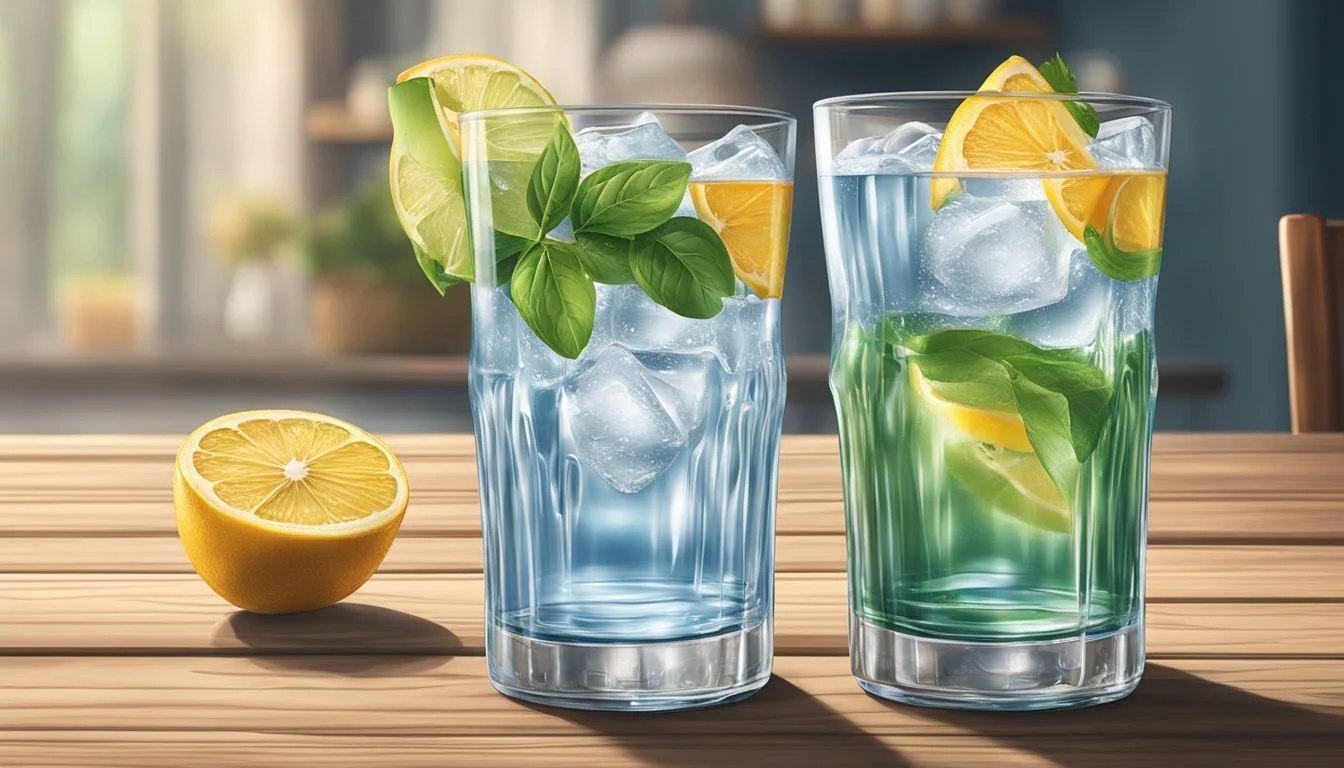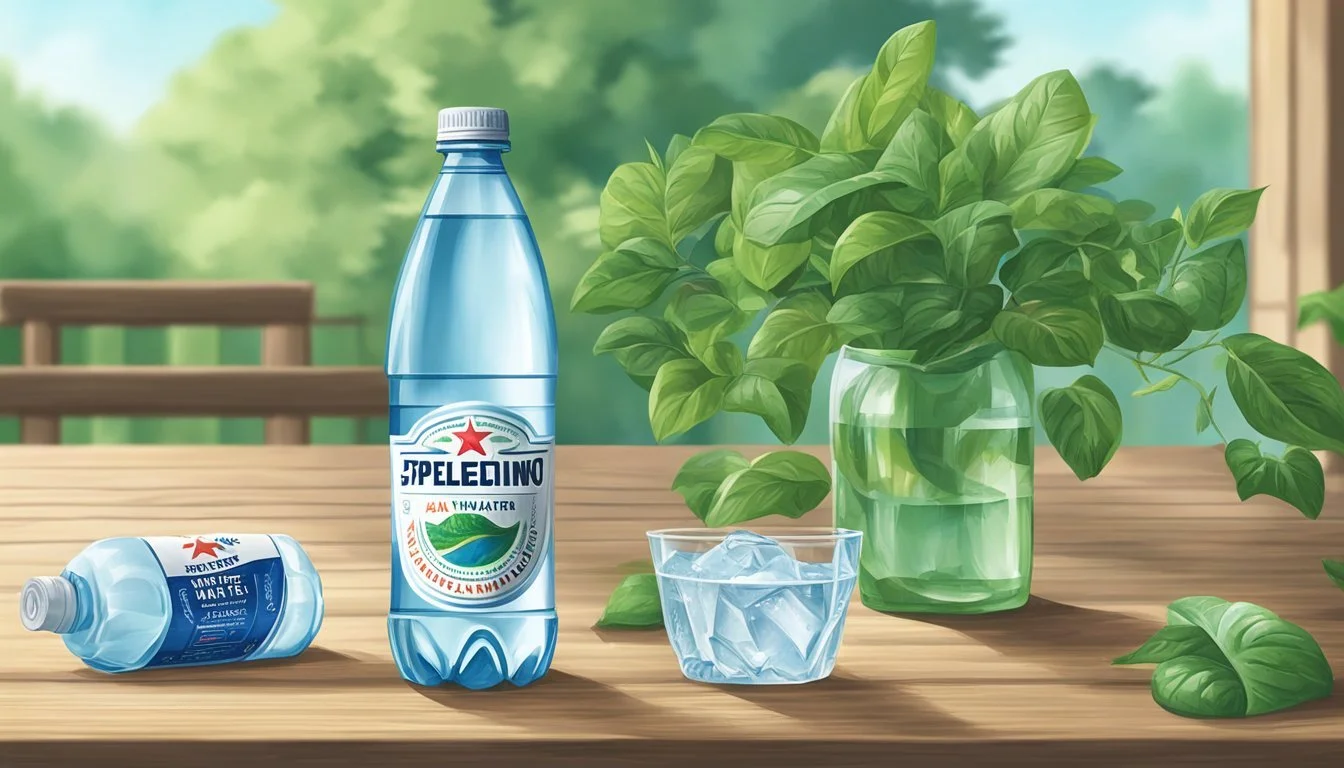Just Water vs. San Pellegrino
Comparing Quality and Taste
Consumers often face a choice between an array of bottled water brands, each promising a unique experience in both taste and quality. Among these, San Pellegrino and Just Water stand out for their distinctive backgrounds and water profiles. San Pellegrino, sourced from the Italian Alps, is renowned for its fine bubbles and subtle mineral content, which lend a refreshing and unmistakable taste. This brand has positioned itself as a premium offering within the carbonated mineral water segment.
On the other hand, Just Water brings a different proposition to the table. It prioritizes sustainability, touting its product as 100% spring water packaged in plant-based cartons. This brand places a strong emphasis on environmental impact, giving eco-conscious consumers an alternative that aligns with their values. The taste of Just Water is marked by its purity and neutrality, attributes that stem from its source in the Adirondack Mountains.
Choosing between these two options goes beyond just palate preference; it's a decision that can reflect personal values and lifestyle choices. While San Pellegrino may appeal to those seeking a classic and effervescent bottled water experience, Just Water might resonate with individuals looking for an environmentally responsible product without the carbonation. The comparison is not just a matter of taste but also an evaluation of the ethos and sustainability practices of the brands in question.
Overview of Bottled Water
The bottled water market comprises a dynamic array of offerings, from still and mineral waters to seltzer and flavored sparkling waters. Each category appeals to different consumer preferences and emerges from varied historical and industry backgrounds, while all are subject to stringent regulations.
History and Industry Insights
The history of bottled water is deeply entwined with the human desire for clean, safe drinking sources and the perceived health benefits of natural mineral waters. In the beverage industry, bottled water has become a prominent segment, showcasing significant growth over the years. Industry insights reveal that brands such as San Pellegrino have carved out a reputation for quality, contributing to the lucrative marketplace for sparkling mineral water. This industry move towards higher-end, premium products has been propelled by consumer demand for alternatives to sugary drinks.
Types of Bottled Water
Bottled water can be broadly categorized into several types, each defined by its carbonation level and mineral content:
Still Water: The most basic form, free from added carbonation.
Mineral Water: Extracted from underground sources, it naturally contains trace minerals.
Sparkling Water: Infused with carbon dioxide to create bubbles; includes natural sparkling mineral waters from sources like San Pellegrino and artificially carbonated seltzers.
Flavored Sparkling Waters: They introduce a dash of flavor, often with natural fruit essences, to regular sparkling water.
Bottled Water Regulations
Regulations governing bottled water are strict, ensuring safety and quality for consumers. In the United States, the Environmental Protection Agency (EPA) monitors public drinking water, while the Food and Drug Administration (FDA) regulates bottled water standards. These include natural mineral water and sparkling water, standardizing labeling requirements, and limiting contaminants. The FDA ensures that the beverage upholds a consistent standard, whether sourced domestically or imported.
Brand Profiles
The comparison between Just Water and San Pellegrino centers on their unique brand identities and water sources which are fundamental to understanding their offerings in the bottled water market.
Just Water
Just Water is known for its eco-friendly approach and focuses on sustainability. Their water is 100% spring water, which is responsibly sourced and boasts natural filtration. They utilize packaging that is largely composed of renewable resources, specifically emphasizing that the carton is made from 82% renewable resources. Just Water offers a product that is not only clean and filtered but also aligns with environmentally conscious values.
San Pellegrino
San Pellegrino is an Italian brand that is synonymous with naturally carbonated mineral water. Their water originates from the natural springs located in the foothills of the Italian Alps. With a long-standing history, San Pellegrino is distinguished by its fine bubbles and subtle mineral content, which contribute to its signature taste. The mineral content of San Pellegrino water includes a variety of minerals like sulphates, magnesium, and calcium, as is common with natural spring waters from such geological locations.
Mineral Content and Health
In determining which bottled water is better, one must consider the mineral content and the potential health impacts of these minerals.
Essential Minerals
Just Water is known for its naturally high pH, which indicates alkalinity, and contains a blend of calcium, magnesium, and potassium. These minerals are beneficial for hydration and contribute to the daily nutritional intake:
Calcium: Vital for bone health.
Magnesium: Supports muscle and nerve function.
Potassium: Crucial for heart health.
San Pellegrino, on the other hand, is a sparkling mineral water that contains a variety of natural minerals, including calcium, magnesium, sodium, potassium, bicarbonate, chloride, and fluoride. It is characterized by its content of:
Bicarbonate: Aids in digestion.
Sodium: Essential for muscle and nerve function but should be consumed in moderation.
Chloride: Important for fluid balance.
Impact on Health
Just Water with its natural mineral content and higher pH level may potentially help in neutralizing acidity in the body, which is beneficial for long-term health including dental health. It may also aid in:
Assisting digestion due to natural minerals.
Helping with better hydration as minerals enhance water absorption.
San Pellegrino has a slightly acidic nature due to its carbonation, but it is not significantly harmful to teeth compared to highly acidic beverages. The moderate consumption of San Pellegrino can offer:
A modest contribution to daily mineral intake.
Potential benefits for digestive processes because of its bicarbonate levels.
Both waters provide minerals essential for health, but the individual benefits depend on each person's dietary needs and restrictions.
Carbonation and Its Effects
In evaluating bottled waters Just Water and San Pellegrino, the presence and impact of carbonation are significant factors. Carbonation contributes to the fizz and texture that distinguish products like San Pellegrino from non-carbonated alternatives such as Just Water.
Understanding Carbonation
Carbonation occurs when carbon dioxide (CO2) is dissolved in water under high pressure, creating carbonic acid. This process results in the distinctive effervescence or fizz of beverages like sodas and sparkling mineral waters.
Carbon Dioxide: A colorless and odorless gas, CO2 is the key ingredient for the fizz in carbonated drinks.
Bubbles: Small gas pockets of CO2 form bubbles, which give carbonated beverages their lively sensation.
San Pellegrino, as a carbonated mineral water, contains naturally occurring carbonation or is enhanced with added CO2 during bottling to achieve the level of fizz consumers expect.
Perceptions of Taste and Texture
The carbonation in beverages like San Pellegrino directly affects their taste and texture, often enhancing the refreshment factor for many consumers.
Taste Test: In taste tests, individuals commonly report a certain sharpness or bite that carbonated water has over non-carbonated water, partly due to carbonic acid.
Texture: The texture of a carbonated beverage, characterized by a tingly sensation, provides a unique mouthfeel that is often described as more refreshing.
When comparing San Pellegrino with Just Water, the latter, being free from carbonation, does not elicit the same sensory response, instead offering a straightforward hydration experience without the fizz and bubbles.
Taste Profile and Flavor
When selecting bottled water, consumers often consider the taste profile and flavor of the product as significant factors. The presence or absence of flavor additives and the source of these flavors can greatly influence the overall taste experience.
Flavor Additives
Just Water offers a range of infused flavors that include lemon, tangerine, and cherry, providing a subtle, refreshing taste without added sugar or artificial sweeteners. These flavorings are derived from natural sources, aiming to enhance the water's taste subtly.
San Pellegrino, on the other hand, is famed for its sparkling mineral water, which includes naturally occurring minerals that contribute to its distinctive taste. While the traditional San Pellegrino has no added flavors, the brand also produces a line of fruit-flavored waters, such as lemon and orange, that contain natural flavors as well as added sugar for sweetness.
Natural vs Added Flavors
Both brands have options that contain natural flavors and are devoid of artificial additives. Just Water's infusions showcase a range of flavors from lime to watermelon, and peach to strawberry, all achieved with natural extracts. In the same vein, San Pellegrino's fruit-flavored beverages offer profiles of pomegranate, orange, and lemon, though these are accompanied by additional sweeteners.
It's pertinent to note that San Pellegrino contains a higher minerality due to its source, which impacts its flavor profile with a slight saltiness and a touch of bitterness. This contrasts with Just Water's more neutral pH and taste, given that it is purified spring water with flavor infusions added for a subtle taste enhancement.
A taste test might reveal that Just Water's natural flavor offerings provide a hint of the chosen fruit, striving for an experience close to that of consuming fresh water with a slice of fruit. The natural flavors, without extra sweetening, aim to deliver purity of taste. San Pellegrino's flavored versions, with their pleasant carbonation and a hint of sweetness, might be more akin to a soft drink experience rather than pure water.
In both cases, consumers have the option to choose water with natural fruit essences, which can add a layer of enjoyment to the hydration process without an overload of flavor or sweeteners.
Packaging and Sustainability
When evaluating Just Water and San Pellegrino, their approaches to packaging and sustainability are essential in understanding their impact on the environment.
Environmental Impact of Bottled Water
The environmental impact of bottled water is significant due to the resources required to produce plastic and glass bottles and the challenge presented in disposing of them. Just Water prides itself on using plant-based materials for its cartons, asserting a lower carbon footprint compared to traditional plastic bottles. The brand's cartons are 82% constructed from renewable resources, such as paper derived from sustainably managed forests and sugarcane-derived plastic. This design is geared towards reducing the use of fossil fuels and greenhouse gas emissions.
In contrast, San Pellegrino, largely distributed in glass bottles, has a different environmental footprint. Glass is infinitely recyclable, reducing the need for new raw materials and associated environmental costs. However, making glass is energy-intensive, and the weight of glass during transport may result in higher carbon emissions relative to lighter packaging options. To address these issues, San Pellegrino has focused on sustainability measures such as recyclable plastic bottles for some of its product lines, advocating for closed-loop packaging systems to ensure that materials are recovered and reused effectively.
Innovations in Sustainability
Both companies have demonstrated a commitment to sustainability through innovations in their packaging. Just Water has significantly focused on sustainable packaging, utilizing a hybrid bottle that is not only reusable but also comprised of materials that are more sustainable than traditional plastic. Their responsible sourcing and manufacturing process reflect their commitment to environmental stewardship.
San Pellegrino has engaged in the pursuit of lighter packaging materials with an aim to ensure both safety and quality while minimizing the use of plastic. Their bottles are designed with sustainability and performance in mind to protect the product and reduce environmental impact. The company is moving towards using recyclable materials, broadening its recycling programs, and improving recycling rates among consumers.
In summary, Just Water and San Pellegrino choose different paths in their packaging and sustainability initiatives. Just Water employs plant-based materials for packaging, while San Pellegrino focuses on using and improving recyclable bottles and systems.
Comparison and Consumer Choices
When choosing between Just Water and San Pellegrino, consumers often consider flavor and health implications. This section delves into how these waters compare in blind taste tests and nutritional content, two critical factors that influence buying decisions.
Blind Taste Tests
In blind taste tests, individuals frequently showcase a range of preferences between Just Water and San Pellegrino. Just Water, known for its eco-friendly carton packaging and natural sourcing, may present a taste that is crisp and clean to some palates. On the other hand, San Pellegrino, with a profile developed from its origin in the Italian Alps, often reveals a certain minerality and fizziness that can be quite distinctive. Expert panels, such as sommeliers and food critics from platforms like Food52, have conducted taste tests that suggest a consumer's preference largely hinges on their fondness for still versus sparkling water and the nuanced flavors they seek.
Nutritional Information and Diet
The nutritional profiles of Just Water and San Pellegrino cater to consumers looking for zero sugar, zero calories, and zero carbs options. San Pellegrino is well-regarded for its mineral content, but it is necessary to review how its sodium levels compare with Just Water. Here is a brief comparison:
Nutrient Just Water (per 500ml) San Pellegrino (per 250ml) Calories 0 0 Total Fat 0g 0g Carbohydrates 0g 0g Sugars 0g 0g Protein 0g 0g Sodium Not significant 10mg
Both brands offer vegan options, displaying an understanding of diverse dietary needs and preferences. However, for individuals monitoring their sodium intake, the choice may tilt towards Just Water due to its minimal mineral alteration. San Pellegrino's mineral content, while offering potential health benefits, includes a noticeable amount of sodium, something diet-conscious consumers take into account.
Cultural and Trend Impacts
The bottled water market has seen a notable shift due to cultural trends and lifestyle branding. Waters from iconic sources such as Vergèze and Bergamo have become symbols of status and health consciousness.
High-End Waters and Lifestyle Brands
High-end bottled waters, often sourced from exotic or historical locations like the San Pellegrino springs in Bergamo, Italy, have transcended mere hydration. They are perceived as lifestyle choices, reflecting an individual's values and social standing. Just Water, with its emphasis on sustainability and ethical packaging, appeals to a generation keen on environmental impact. With products like Voß from Norway or Poland Spring from Maine, consumers often select brands that resonate with their personal brand and values.
Celebrity Influence and Millennial Trends
Celebrities have played a significant role in shaping the bottled water market. Endorsements by influential figures suggest a direct correlation between a specific water brand and a desirable lifestyle. Furthermore, millennials frequently drive market trends with their preference for brands that offer a combination of health, luxury, and ethical production. The broad reach of social media helps disseminate these trends quickly, amplifying the impact of celebrity influence on consumers' choices in the competitive bottled water industry.
Conclusion
When comparing Just Water to San Pellegrino, one should consider several factors including environmental impact, mineral content, and pH levels.
Just Water prides itself on eco-friendliness. Their packaging, made primarily from paper and sugarcane, is designed to reduce carbon footprint and is 100% recyclable. They offer still water that is responsibly sourced from a spring in the Adirondack Mountains, ensuring minimal environmental disruption.
San Pellegrino, renowned for its sparkling mineral water, contains a blend of minerals like calcium, magnesium, and bicarbonate. These contribute to its signature taste and its higher mineral content when compared to Just Water. A notable aspect of San Pellegrino is its slightly acidic pH, which is a characteristic of most sparkling mineral waters.
Aspect Just Water San Pellegrino Packaging Eco-friendly, recyclable Traditional glass and plastic bottles Source Adirondack Mountains Italian Alps springs Mineral Content Lower Higher pH Level Neutral to slightly alkaline Slightly acidic
The choice between these two brands ultimately depends on individual preference. Consumers looking for an eco-conscious option may lean towards Just Water, meanwhile, those valuing taste profile and mineral benefits might prefer San Pellegrino. Both options pose distinct features, making them favorable depending on one’s priority, be it environmental impact or mineral intake.






